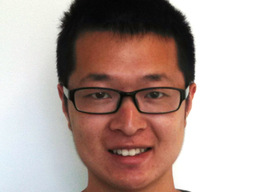PhD Proposal: Haixu Leng
Location
Physics : 401
Date & Time
April 6, 2016, 10:00 am – 11:30 am
Description
ADVISOR: Dr. Matthew Pelton
TITLE: Discrete Metal-Semiconductor Nanoparticle Assemblies for Controlled Plasmon-Exciton
ABSTRACT: In my thesis, I will experimentally and theoretically study the interaction between individual gold nanorod and semiconductor nanoparticle. They are the building blocks for a lot of studies in nanoscience and nanotechnology. By rigorous theoretical study, it is proposed that induced transparency dip can be produced in nanorod surface plasmon (SP) resonance by coupling to a quantum dot (QD). Calculations predict a dramatic change of scattering from the SP due to the QD, even though the cross section of the QD is much smaller than the cross-section of the SP. The strong coupling between SP and QD can be turned "off" by exciting (saturating) the QD to a state decoupled from the SP by absorbing one photon. I will verify these predictions experimentally by studying the individual gold-nanorod / QD assemblies. The data will be compared to both classical and quantum models to see if a quantum description is necessary to understand the coupling.
TITLE: Discrete Metal-Semiconductor Nanoparticle Assemblies for Controlled Plasmon-Exciton
ABSTRACT: In my thesis, I will experimentally and theoretically study the interaction between individual gold nanorod and semiconductor nanoparticle. They are the building blocks for a lot of studies in nanoscience and nanotechnology. By rigorous theoretical study, it is proposed that induced transparency dip can be produced in nanorod surface plasmon (SP) resonance by coupling to a quantum dot (QD). Calculations predict a dramatic change of scattering from the SP due to the QD, even though the cross section of the QD is much smaller than the cross-section of the SP. The strong coupling between SP and QD can be turned "off" by exciting (saturating) the QD to a state decoupled from the SP by absorbing one photon. I will verify these predictions experimentally by studying the individual gold-nanorod / QD assemblies. The data will be compared to both classical and quantum models to see if a quantum description is necessary to understand the coupling.
